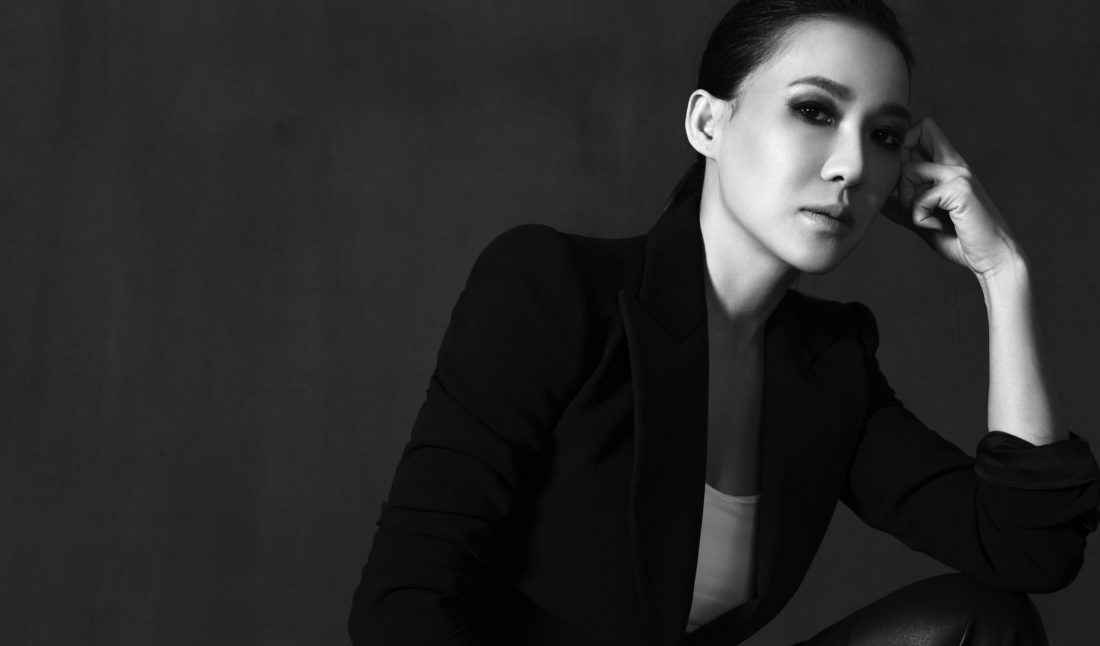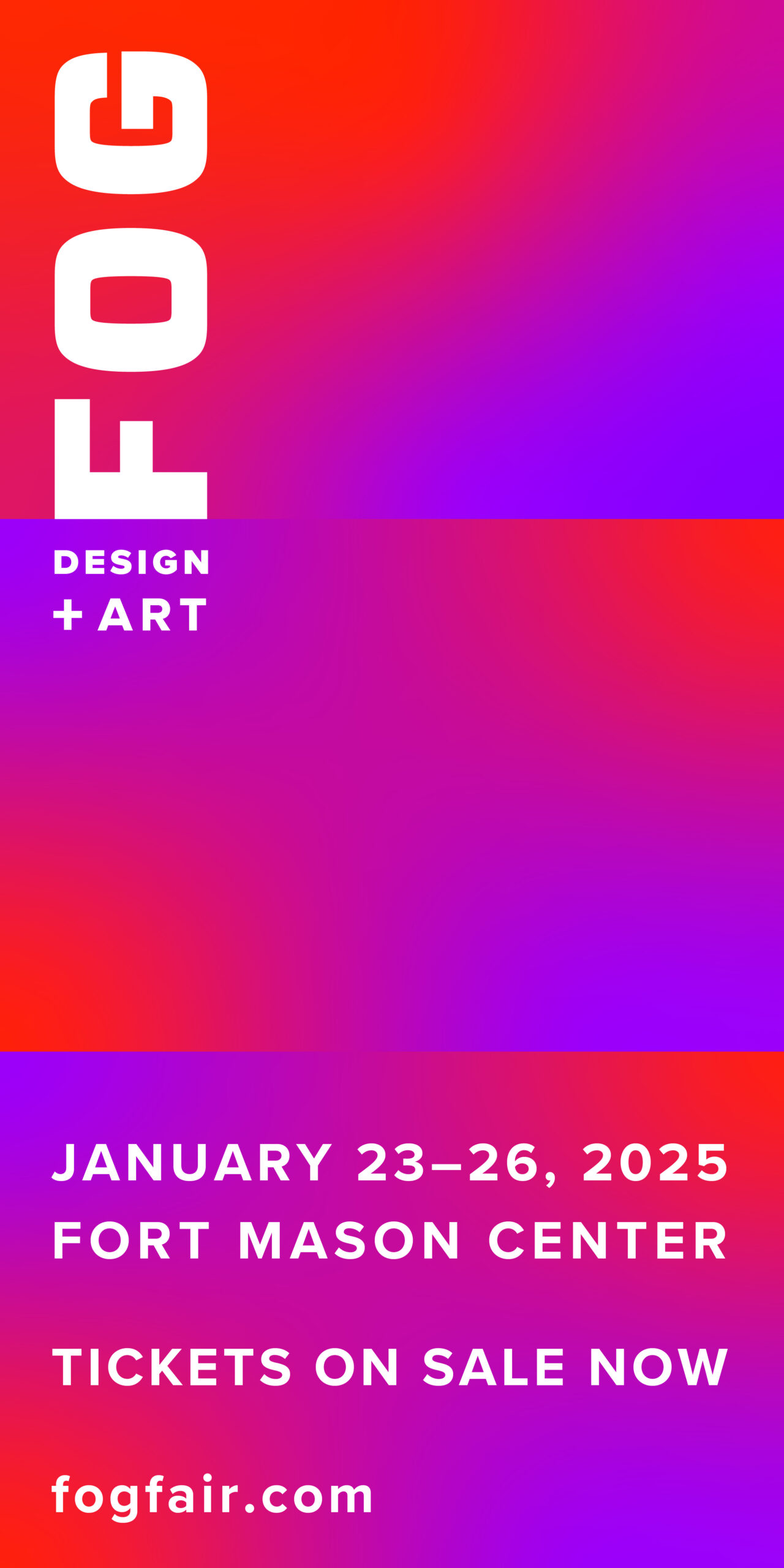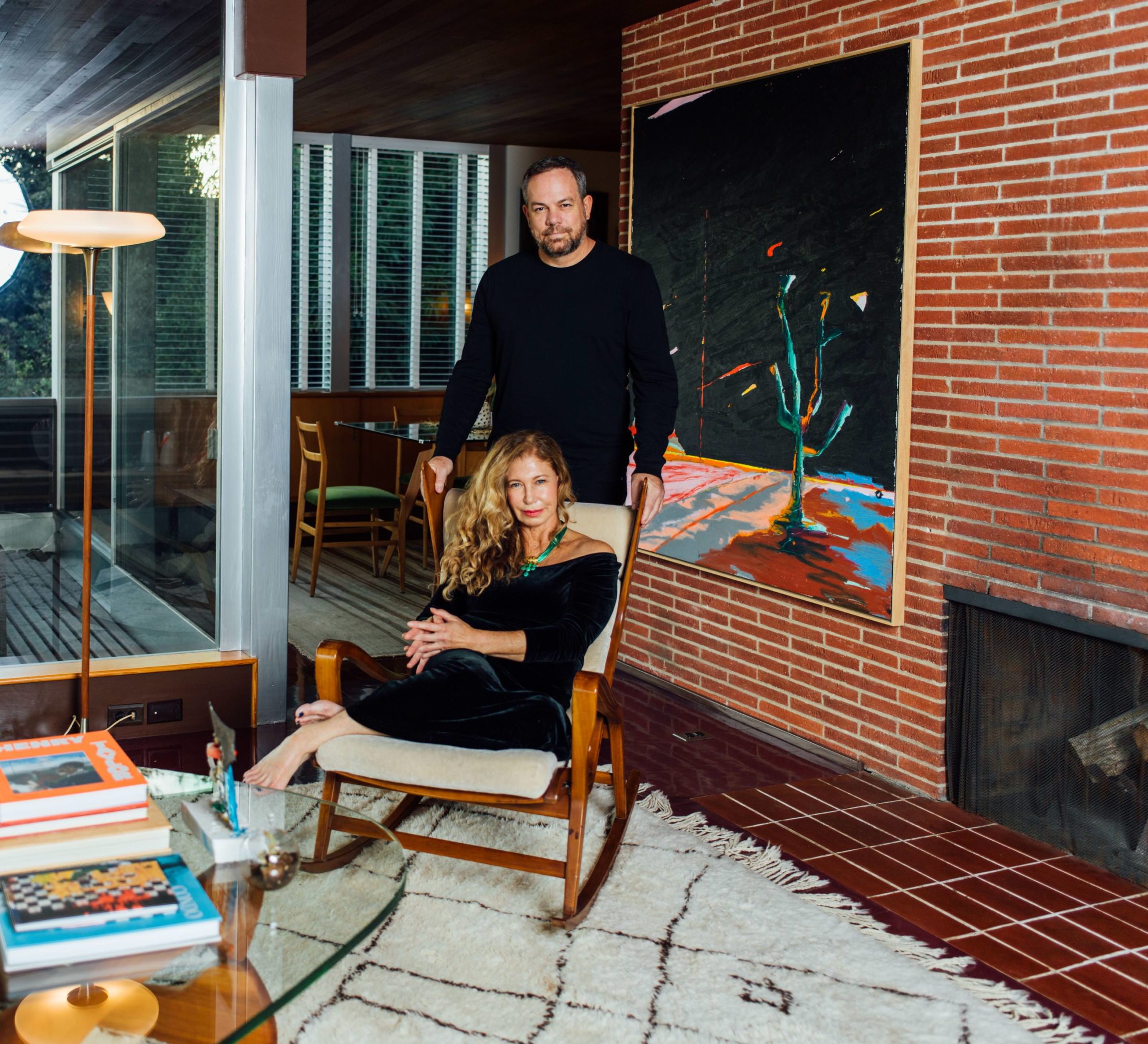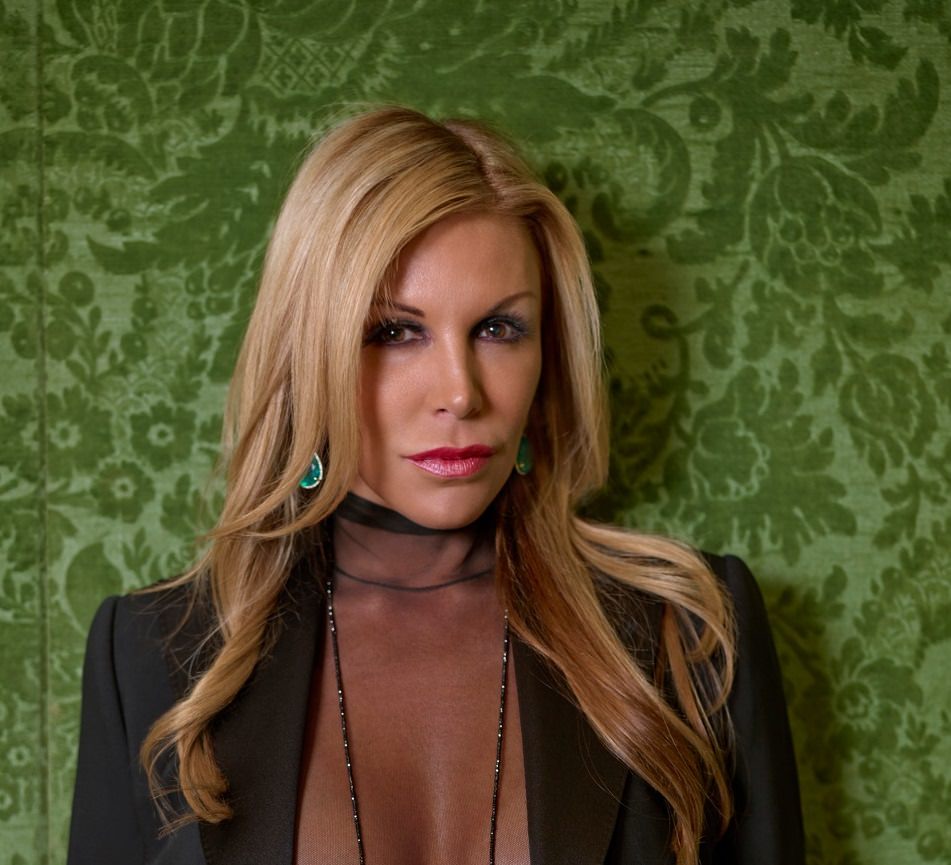Cindy Chao describes herself as a jewelry artist. And it’s true that calling the Taiwanese founder of her eponymous jewelry collection a designer would not do her justice. Her pieces are inspired by nature, as well as by feminine items like ribbon—common industry tropes. But her shapes are incredibly unique and distinct in their organic and fluid forms. There is a raw feeling captured in her work that makes Chao stand out from her peers.
Her collections are more like sculpture, and in fact she trained with her sculptor father. Her grandfather was a noted architect, and she initially wanted to pursue architecture but, after some encouragement from her mother, chose precious gems and metals over steel and timber.
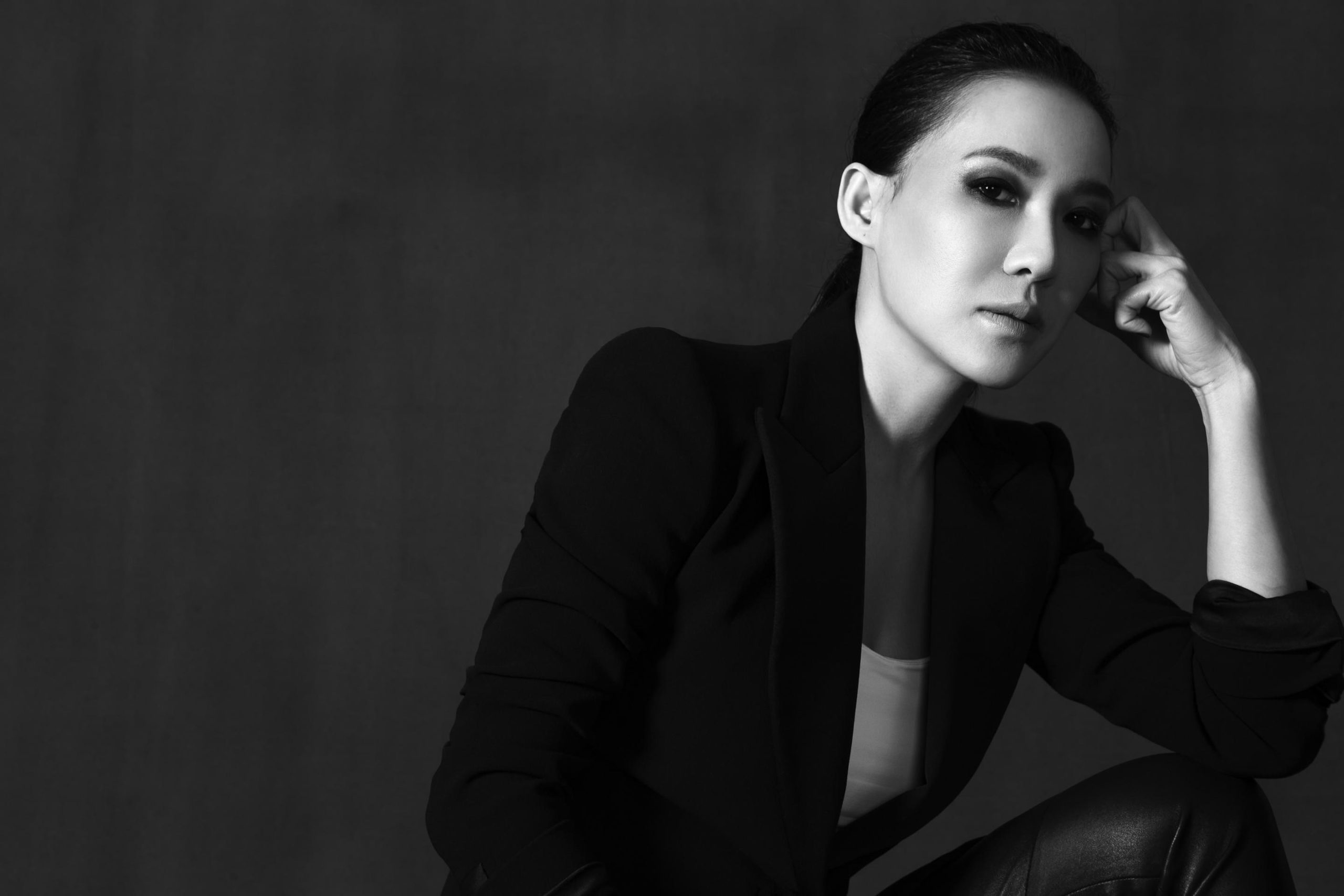 Courtesy of Cindy Chao The Art Jewel
Courtesy of Cindy Chao The Art Jewel
Whitewall spoke with Chao about her process and mission of promoting jewelry as a form of art.
WHITEWALL: You grew up in a creative atmosphere—your grandfather was an architect, and father a sculptor. Can you tell us about that experience?
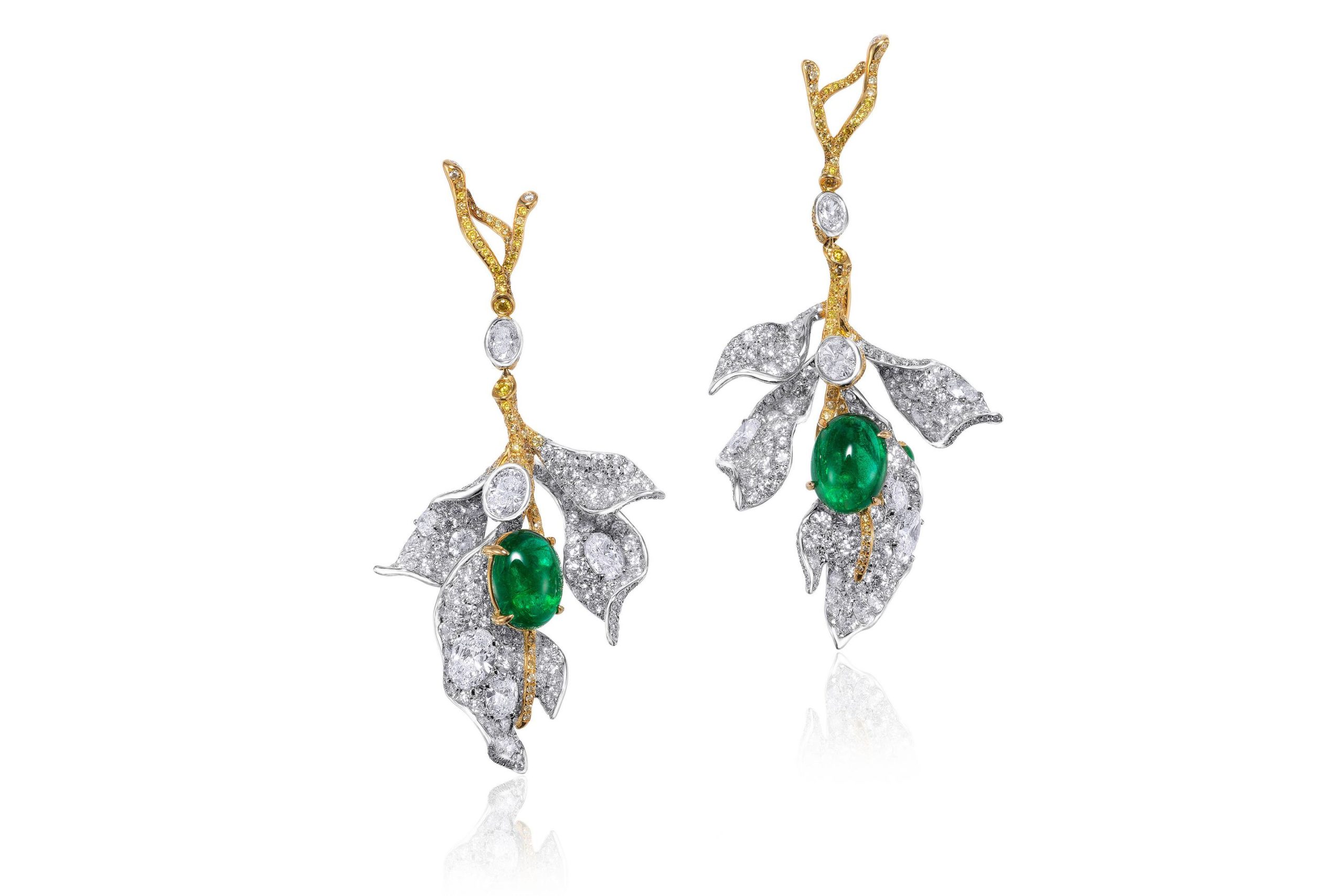 Courtesy of Cindy Chao The Art Jewel
Courtesy of Cindy Chao The Art Jewel
CINDY CHAO: As a child, I was surrounded by creativity and spent most of my days with two masters: my father and grandfather. I feel very fortunate because I was not trained “inside the box.” My grandfather was a noted architect, many of whose works are now considered historical monuments. He always took me to the construction sites of his architecture, so I was able to see the world objectively in a structural and spatial way. As a sculptor, my father taught me to take into account each angle, form, and expression of what I observe, and to transform observations into well-rounded creations. Already in my childhood, both of them imprinted an idea in me—true art has to be able to stand the trial of time, and only true art can transcend time and be passed on from generation to generation. I watched, listened, and learned from these two masters how to pour life and expression into creations. They nurtured in me a passion for art and architecture.
WW: You apprenticed with your father. What understanding of sculpture did that leave you with?
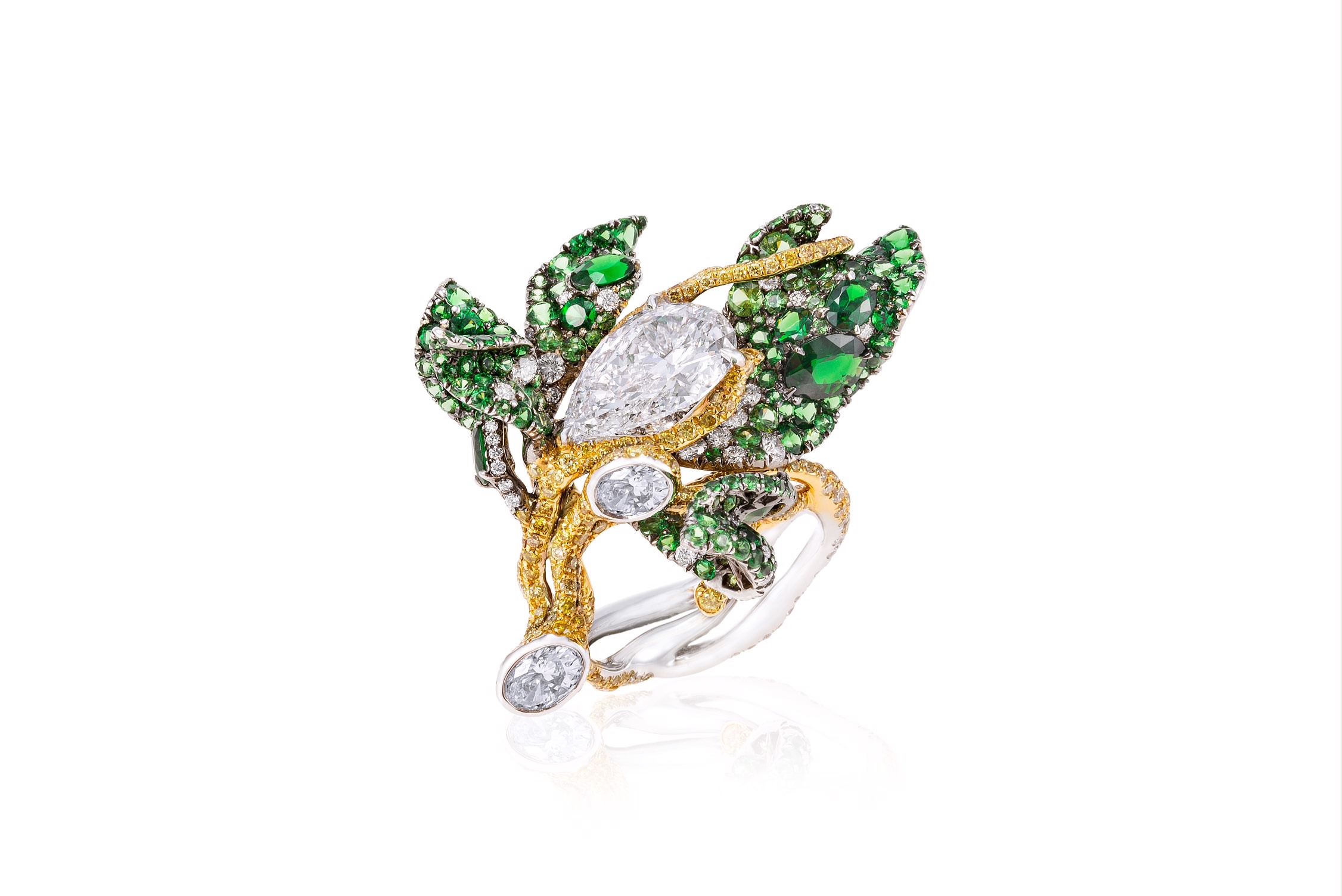 Courtesy of Cindy Chao The Art Jewel
Courtesy of Cindy Chao The Art Jewel
CC: As my father’s first apprentice, not only did I learn various sculpting skills and techniques, but most of all, I learned the importance of observing life with patience. Countless times, I experienced a great sense of wonder watching my father carve life and emotion into his sculptures with his bare hands. His words of wisdom continuously ring in my ears. “Regardless of the subject, the final piece must be as vibrant as it is in real life. Observe the object, pay attention to the tiniest details, and then, with your heart and soul, put into forms what you’ve perceived.” In order to represent wrinkles of elderly people on his sculptures, my father could spend the whole day on the bus studying old travelers’ facial expression. “A creator cannot be deemed to succeed if his work presents no energies, and energies only come from careful details.” I have always borne his guidance in mind, reminding myself to feel the world as closely as possible for my creation. My work can therefore be said to be a continuation of my family heritage.
WW: You pursued jewelry design. When and how did you realize you could translate what you learned from architecture and sculpture into jewelry design?
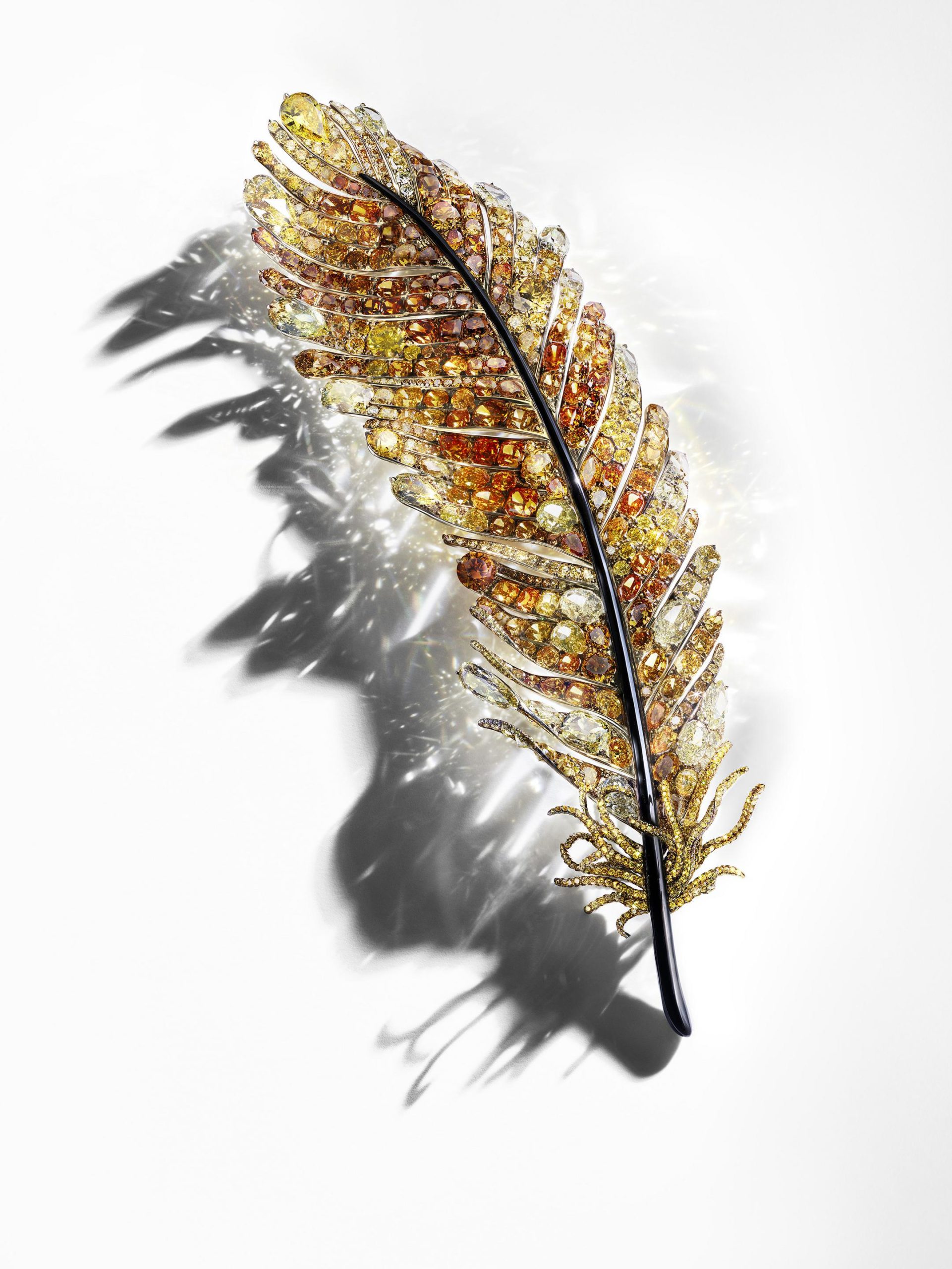 Courtesy of Cindy Chao The Art Jewel
Courtesy of Cindy Chao The Art Jewel
CC: In fact, as a young adult, I aspired to be an architect like my grandfather. Even when I decided to study in New York, I wanted to study architecture. It was my mother who gave me a push to put my creative talent into a profession that felt more feminine. So instead of stones and timber, I chose precious gemstones and metals.
To my surprise, I discovered numerous parallels between the fields of architecture, sculpture, and jewelry. “Color,” “structure,” “layering,” “space,” “light,” “curves,” and “turns”—these are the terms I grew up familiar with, which are also used to describe different elements in the world of jewelry. They brought me fascination again and again, and I could not help but immerse myself in the three-dimensional art forms of gems. Most important, when I learned about the traditional wax sculpting technique (la cire perdue in French), I realized how I could possibly extend my passion for architecture to jewelry design. The technique allowed me to make miniature sculptures in the same way that architects design buildings. Although the medium of my expressions is different from my father’s and my grandfather’s, the spirit is one and the same, and the family legacy is passed on.
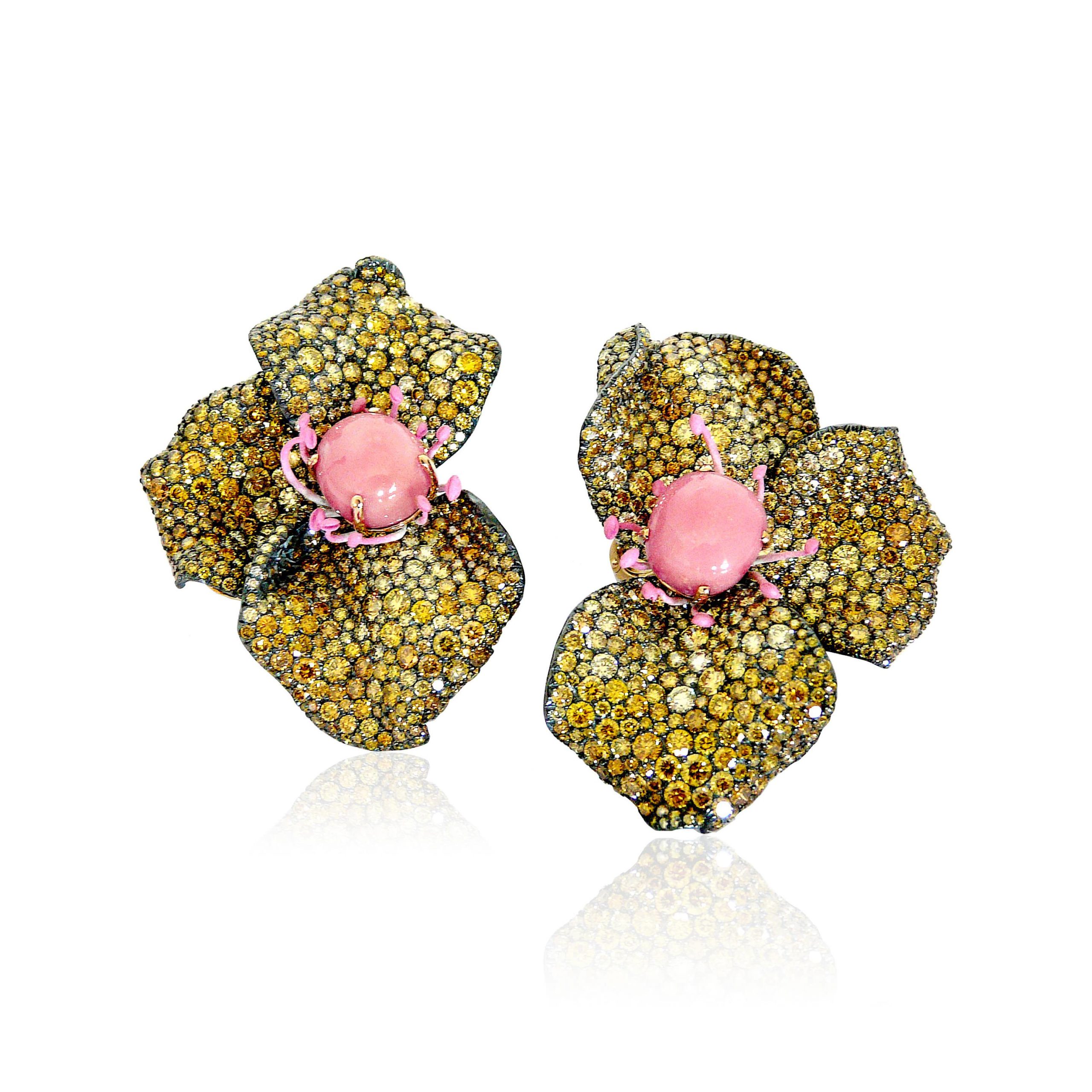 Courtesy of Cindy Chao The Art Jewel
Courtesy of Cindy Chao The Art Jewel
So if you ask me how I would identify myself, I would say that I am a jewelry artist; with gems I create sculptures.
WW: That’s an important distinction, and your brand is named “Cindy Chao: The Art Jewel.” Do you consider the jewels you create to be pieces of art?
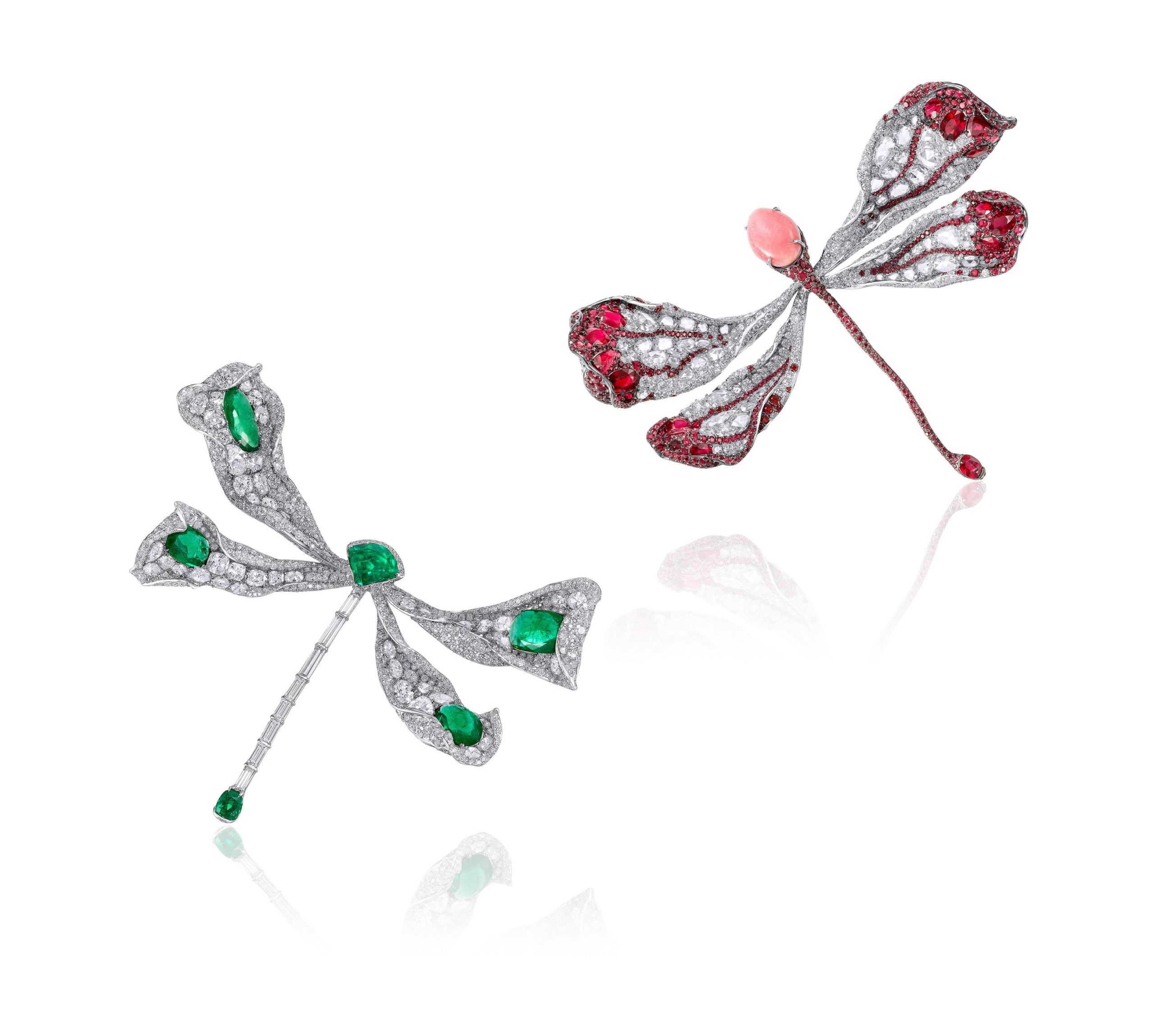 Courtesy of Cindy Chao The Art Jewel
Courtesy of Cindy Chao The Art Jewel
CC: Since the brand’s establishment, my vision has always been to promote jewelry as a form of art and to create jewels as three-dimensional sculptures. This spirit is revealed by the brand name “Cindy Chao: The Art Jewel—the fusion of art and jewelry. I believe that a great piece of art must be seen, understood, and appreciated. At the same time, to be able to achieve this, the art must transcend cultural, linguistic, and geographical boundaries. The same should be true for jewelry. It should be a miniature piece of sculpture and art in a wearable form. This philosophy is incorporated in every one of my creations to bring together art and jewelry.
As a jewelry artist, I create wearable art that is an encapsulation of emotions and moments of life. Not only do I lean toward the wearability of an object, but I also focus on emotional connections. All my creations are an extension of myself; they translate my soul and illustrate the world we live in. They also connect the wearers of my jewels and me as an artist. In my works, my collectors are able to feel the energies I have invested and witness the exquisite craftsmanship by which the jewels were realized. I consider such intimate sentiments shared by both the creator and the collectors to be the value of art.
 Courtesy of Cindy Chao The Art Jewel
Courtesy of Cindy Chao The Art Jewel
WW: How would you describe the shapes you like to achieve in your designs?
CC: My style is very organic, architectural, and sculptural. My work is, first of all, organic because when I conceive my creations I always want to capture the most vibrant moments or creatures. For example, on the 2016 Black Label Masterpiece XVI, the Phoenix Feather Brooch, there are nearly a thousand fancy yellow diamonds of more than thirty-six rare hues and cuts collected from around the world. Hidden within the brooch is a chameleon diamond and a fancy vivid orangey-yellow diamond. Each diamond is precisely measured and accurately placed alongside one at a time to portray the delicacy of an airy feather, its curving arc and whimsical movement.
The architectural aspect of my work can be attributed to my family heritage. Growing up with an architect and a sculptor, I gradually developed a three-dimensional way to view the world. I believe jewels, like architectures, must unite light, space, and engineering to bring each piece energy that is one-of-a-kind.
My design process is laborious yet extremely rewarding. It typically starts with my inspiration, then I hand-carve and sculpt the wax model right away. The benefit of wax sculpting is that I can carve the curves, undulations, layers, and silhouette that I want my pieces to take. On the wax, I can structure the piece in detail from every angle, giving it the rich depth that a simple design sketch could never contain.
Thus, every one of my creations is a miniature 360-degree sculpture gleaming with lively, organic spirit. One of my inspirations is Michelangelo, and I recall one of his quotes saying that when creating, he is freeing the soul of the marble. “I saw the angel in the marble and carved until I set him free.” This is exactly how I feel when I wax-sculpt to create an art jewel—by reducing the unnecessary, I keep the true essence, the soul of the piece.
WW: Your latest “Black Label Masterpiece” collection debuted in 2016 during Paris Haute Couture. And your Black Label Masterpiece Butterfly Brooch is now part of the Smithsonian Natural History Museum’s permanent collection. What does that kind of recognition mean for you?
CC: I believe that a piece of jewelry can reflect the history of an era. Having my work inducted into a leading institution such as the Smithsonian National Museum of Natural History is the highest of honors. It is humbling to know that, the gemstone usage, unique design, and craftsmanship of the 2009 Black Label Masterpiece Royal Butterfly Brooch was recognized and that the piece is preserved to be seen by millions of visitors each year for generations to come. I sincerely hope each viewer is able to take away a personal experience after viewing the piece. It is rewarding for me that they called the Royal Butterfly a timeless piece—as described by the chair of the Department of Mineral Sciences at the Smithsonian—that represents and records a breakthrough in jewelry craftsmanship of our era. As my brand evolves and improves, I want to continue on the pathway of creating artworks of today that would become historic collections of tomorrow.
WW: Do you remember the first piece you purchased? Do you still have it?
CC: I first started collecting about eight years ago, and to date I have a handful of interesting works. Being a sculptor’s daughter, I’ve always been drawn to sculptures, especially in bronze or brass—they are so versatile in terms of the techniques and effects one could impose on them. My first piece is a bronze sculpture from Ju Ming’s “TaiChi” series. It has a certain spiritual aspect associated with life, the moment in between stasis and movement.
For years I’ve pondered where to place put this sculpture. Now that I think of it, maybe I should display it in the showroom.
WW: What kinds of work are you drawn to? Contemporary, modern? Is there a specific medium or subject?
CC: Oil paintings and sculptures are the two artistic expressions that speak to me the most. As someone who appreciates art, I love Michelangelo, Rembrandt, Modigliani, Francis Bacon, Sanyu, and Peter Doig, to name a few. They are the masters who use color, space, brushstrokes, and light so expertly that my heart resonates with each brush and mold.
As a leisure collector, however, new artists and creations with abstract subjects are more interesting and intriguing for me. The dynamic and energy are refreshing, and I get to explore more about the artists and see their evolution as well.
WW: For the contemporary artists whose work you collect, is it important for you to meet them or visit their studios?
CC: I’ve had the pleasure of meeting a few artists and visiting their studios, and most recently the studios of Yan Pei-Ming and Wang Yan Cheng in France. For me, it is a discovery, an exploration, and an emotional exchange. When you get to know an artist, take a glimpse into her mind, and try looking at the world through her lens, it is an eye-opening and humbling experience.
WW: Any recent discoveries or acquisitions of note?
CC: Dan Colen’s Fresh Flesh is my most recent acquisition. His usage of real flowers on linen and ability to mix such bright colors yet bring forth an energetic harmony amaze me to no end. I stood in front of the work for ten minutes the first time I saw it!
This article appears in Whitewall‘s fall 2017 Couture Issue.






